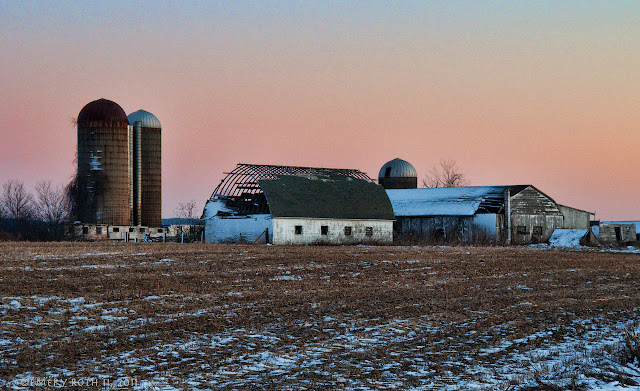PHOTOGRAPHER'S JOURNAL: Looking southwest the light glared, but to the east were clouds of character ready to assume a cloudscape. If only there was a point of focus! The particular subject wouldn't matter; it was a McGuffin. However the logical place to go would be to find an east-facing hill and shoot from there. Instead, we went due east and climbed the west-facing slope looking down on Tanner Hollow and straight into the glaring sun. Photographically it was exactly the wrong way to go, but we'd never been there, and we could see a clearing, high up behind the last corn field, and perhaps a clearing even higher behind that, and the clouds above them looked beautiful, and of course, we'd never been there.
The last cornfield was plowed across a steep hillside already high above Tanner Farm. Climbing, we stumbled over cut stalks like stubble on a giant's chin, Each time I looked back the clouds glared from behind a muddy, gray mass of stuff: fields, forest, farms, and hills - until I reached the top of the cornfield and turned around again. That was when I began to see the familiar shape of Mt. Bushnell at the back of Lake Waramaug and recognized the land I somehow knew, but from a new angle, the world tipped up for me to see.
Just as when shooting a bust portrait, one wants the oval of the face in the upper two thirds of the frame, greater height was needed to give Mt. Bushnell sufficient neck.
We finished climbing the field behind the field and the field behind that; and when we got there the trees that divided the fields were a scrim, and Mt. Bushnell stood hazy and clear in the first blush of what I thought would be a lazy, hazy sunset that would burn itself out pointlessly, and that was when my companion thought of a better place to shoot if we just hurried down the hill again to our cars.
It took strong incantations to pull this image from the murky light, but this is much as it appeared through my medium long lens, which is to say it is definitely a photograph and not some other species of graphic manipulation.

















